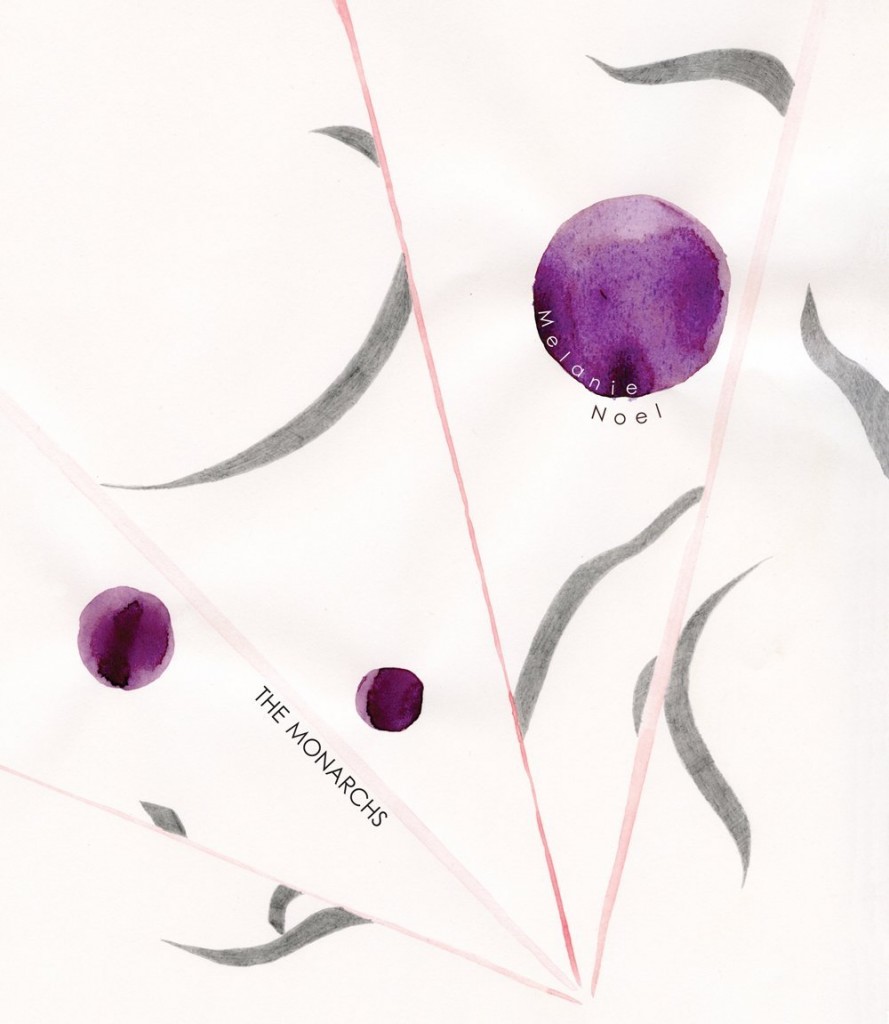Book Review
 In her debut collection, The Monarchs, Noel takes up the butterfly as totem creature for her acute perception of the world: “I was conceived by virgins under a tree draped with monarchs. It is almost too much.” Curiously, she also implores the butterfly to leave behind something of its perceived meaning, which we later find allows the two of them and the many other flora and fauna she accretes to travel lightly through an alien and astounding place, one we might call an ecosystem—haunted as it is by the creations of the human mind and spirit: “Monarch, do you see the droning angels? Step out of your lace.”
In her debut collection, The Monarchs, Noel takes up the butterfly as totem creature for her acute perception of the world: “I was conceived by virgins under a tree draped with monarchs. It is almost too much.” Curiously, she also implores the butterfly to leave behind something of its perceived meaning, which we later find allows the two of them and the many other flora and fauna she accretes to travel lightly through an alien and astounding place, one we might call an ecosystem—haunted as it is by the creations of the human mind and spirit: “Monarch, do you see the droning angels? Step out of your lace.”
Such is the mode of travel through this work: light, exposed, and strong, much like the insects it considers with a trademark rigor and grace.
Noel’s unwavering awareness is so keen and rapt that as it perceives it also exerts pressure on its object, and the image that returns to the gazer arrives metamorphosed. Just as metamorphic rock presents a record of its own creation, existence, and reinvention, Noel’s images and phrases come to us intensely acted upon, but elementally unharmed, as in “The Lion Ant”: “I had seen your pelt in the transparent woods: unclean / but gleaming.” Here all at once we see the gleam that incites the observation, the charged awareness that makes the woods “transparent,” and the simple yet profound conflation of insect and mammal in the word “pelt,” itself rarified and strong.
The book relies on its sensitivity, rather than any macro-structure, to find the nut-meats of truth wherever they lie: in the remembered (“One can hear the trains that never come”); in the background (“the war sees to itself”); in hopeless, misguided empathy (“My neighbor pets the dying bees”); in judgment (“Things people say and shouldn’t”); in error (“Truths which could be lies: No one will come”); in play (“As kale is strong so are we! / Oblivion River Never!”); in the near-sardonic (“Epic flower // Famous spider”); and especially in the power, seduction, or indifference of the natural world (“The green sun turns […] to shine on the broken bill of the goose and then equally / on its unbroken companion”). Indeed, this book is so adept at finding these gems that one almost wishes it were slightly less deft on a line-by-line basis so that the author would have to turn more of her significant ability toward the larger structure, which forms a slightly troubled arc, one that may harbor missed opportunities (read: this book could easily be longer and benefit from it).
The currents that act as foils to the book’s intense and transformative power, keeping the method’s strength from outright warping its content, are several and elegant. First, generous lineation choices aerate the book. Often a poem of only twenty or thirty words dips and pulls over the whole eight by eight-inch page, playing out the spaciousness of amazement and simplicity. Noel also invites plain diction and syntax into the midst of her sensory and intellectual intensity, which stills and distills the work: “Pear. Rosemary and pear”; “Glasses break in the landlocked town.”
The clean blend of music and physicality (“hum surgical, hum”) also makes Noel’s hyperawareness feel solid and trustworthy in addition to ethereal. The resulting, composite authority of voice helps us see simply what is strangely true: “Styrofoam cups / shuffle under the seats / the gossip of moons.”
The final countercurrent to the book’s pressurization, an intermittent gaze at the self, seems to be the least comfortable for the speaker (and sometimes a source of humor, if also a slightly flat dissonance): “Window I said / to the window in the empty hall: Something / something.” Noel reabsorbs this tonal contrast into her clean movements, undressing, as she did with the monarch, and thereby dissolving any inertia that might have developed: “I to the going steadfast / unfastened.” Though late in the book, this gesture of opening and self-erasure affirms the “grid of the missing center,” a search for what Noel bravely seems not to know. But we suspect, more and more, that the transparent beating heart she orbits throughout the book is, after all, at the center—which turns out to be the end—of the book.
In The Monarchs, we begin in a landscape humming with ants and bees and dripping with yellow and honey. We end in a far more dangerous, primordially powerful place. The bees have given way to the transformed human, and the honey has boiled to “royal jelly in our throats,” now ominously emergent in its richness. Over the course of the book, we seem to have traveled methodically via that “grid of the missing center,” each line of sight or thought vibrating with intention and new reality, and arrived at the experience not of a decoded world, or of righteous ecopoetics, but of a place far deeper and more dire, coiled inside the body of a beauty and urgency “prior to speech.”
Published 5/6/2014
About the Reviewer
Caroline Manring holds degrees from Cornell University and the University of Iowa Writers' Workshop. Her poetry collection, Manual for Extinction, won the National Poetry Review Book Prize. She teaches creative writing and environmental literature at Hobart and William Smith Colleges, and lives in Ithaca, NY, where she leads bird walks and plays fiddle in a family band.